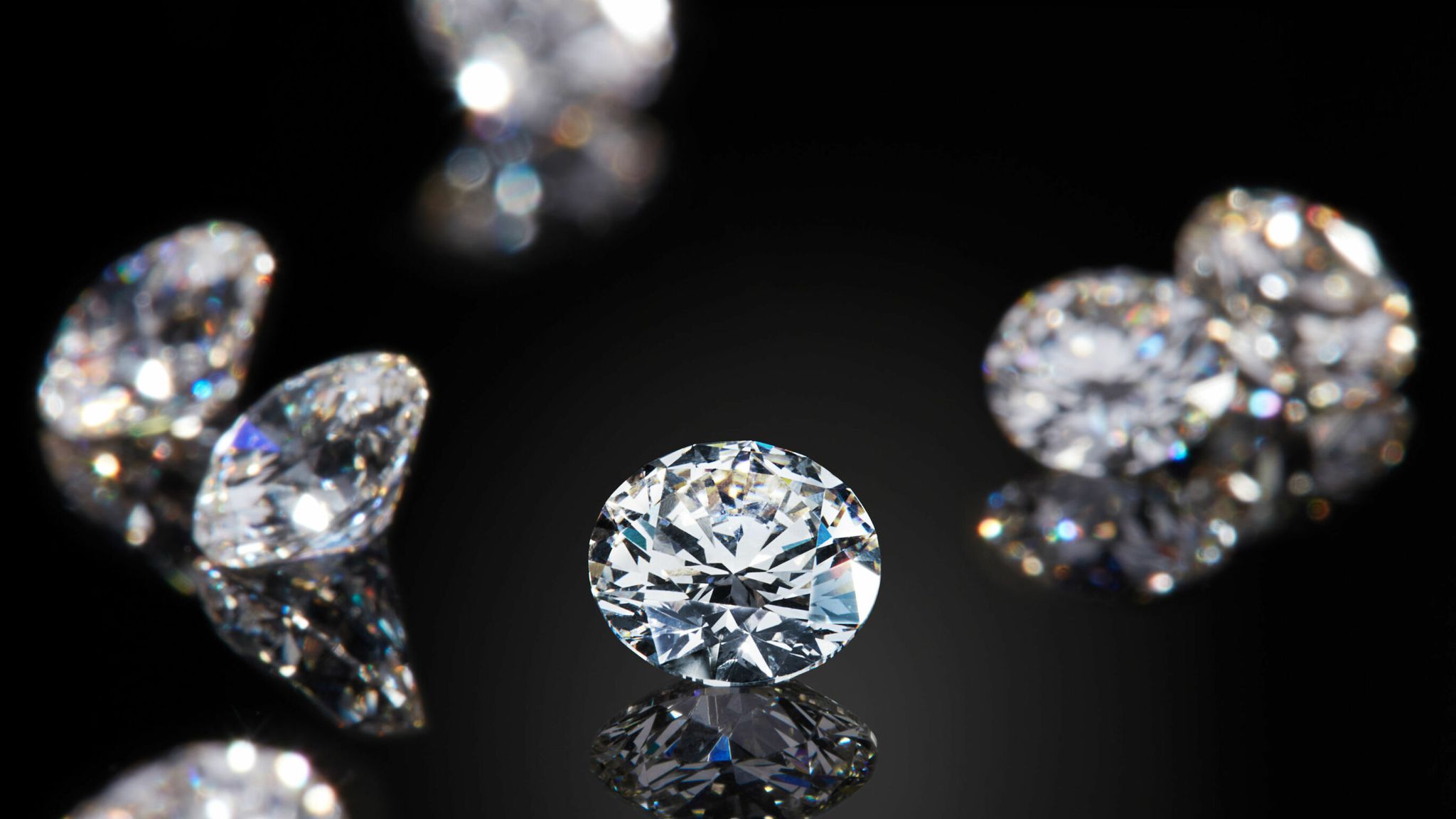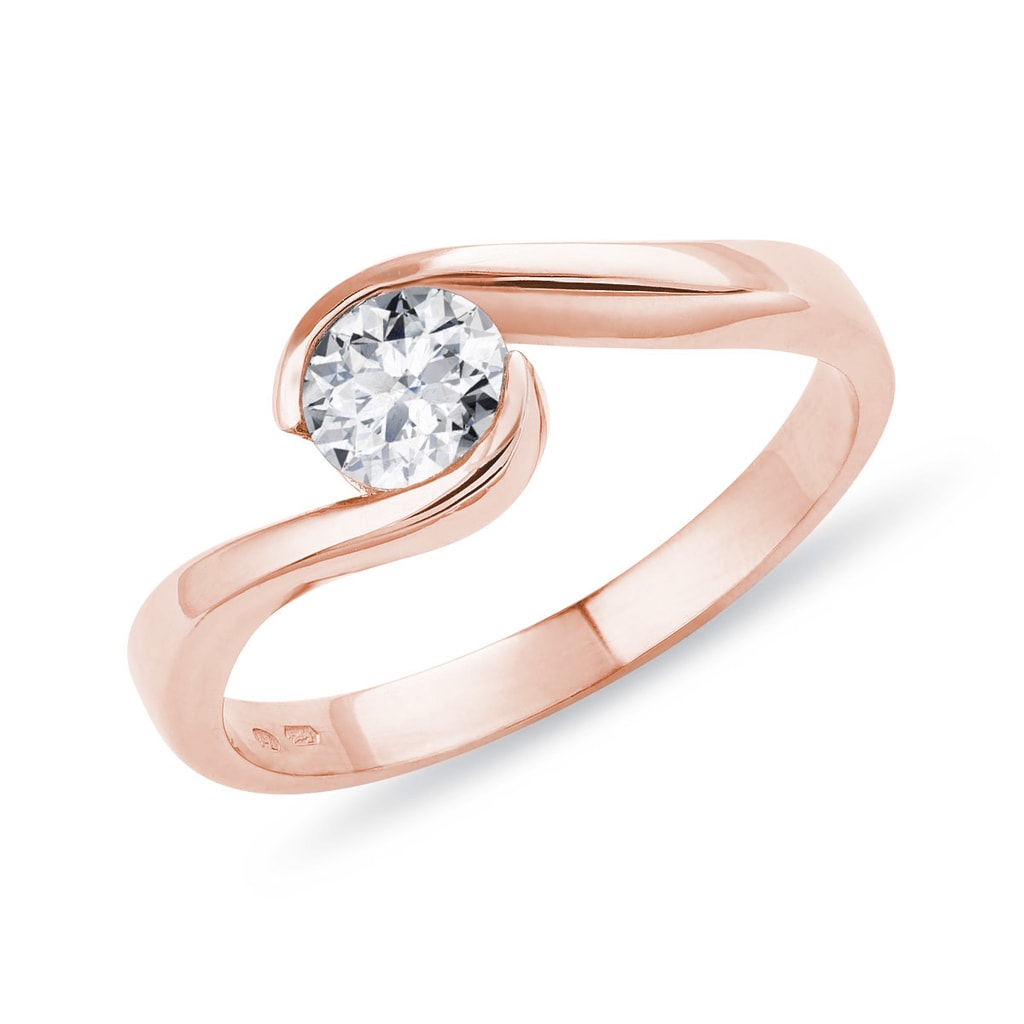Everyone will surely come across the definitions of diamond, brilliant or zircon while choosing their engagement ring or promise ring. But do you know the real difference between them? Choosing the engagement ring isn’t quick and easy. To buy the right one, you need to know which metal you want it to be crafted from, what size to choose and what gemstone will shine upon it.
Most people choose one central gemstone, but some prefer to have a few smaller gems, but still with one dominant in the middle of the ring. A diamond with a brilliant cut is chosen most often for its long durability and blinding lustre. A cheaper version is zircon, which is basically a lookalike substitute. One big difference is the fact that zircon loses its shine after some time and later becomes matte.
The selection of your ring is very often affected by the budget. Be sure to know it, before you start even looking at all the options you have. The price is determined by the weight of the used material, the type of gemstone and of course the overall work that has to be done to craft your ring. Now, let’s have a look at the different gems that can be used in your engagement ring.
Diamonds Last Eternity
Diamond is a mineral – crystal form of the element carbon, which formed under high pressure and temperatures in the Earth’s mantle. Diamonds have quite a few interesting properties because of their unique structure. One of them is its durability, high melting point, the highest refractive index of all natural substances and its chemical resistance. It can be marked as the perfect gemstone.
However, nothing’s perfect – even diamonds aren’t. Diamonds imperfection is its fragility. Although it is resistant to pressure, any impact can cause massive damage. The Tolkowsky cut isn’t used anymore because of this property – this cut made diamonds fragility even worse.
Natural diamonds have a lot of impurities in them. They are very often are grey, black or in other shades ranging from yellow to brown. Completely transparent natural diamonds are rare. Even more rare are coloured diamonds, called fancy diamonds, which are very expensive and their colours range from pink, blue to green.
We use diamonds in many different fields, but the most important one is the jewellery industry. Diamonds used in this field have to be cut in some shape. The most popular one is the brilliant cut.

What is the difference between Diamond and Brilliant?
Many people think that brilliant is a gem, which is not correct. If you have an engagement ring with brilliant, it is a diamond which is cut into a shape called brilliant.
Its name comes from a French word meaning “shining”. It originated around the year 1910, but the calculation of the modern brilliant cut was developed in 1917 by Marcel Tolkowski. He calculated the ideal angle of inclination of facets. The perfect round brilliant consists of 57 facets – main one at the top, 32 in the top half and 24 in the bottom half. Because of these facets, the light can shine through. The light reflects and uses the whole colour spectrum in maximum intensity. That is the main reason why brilliants belong to the most stunning and elegant gems, which are ideal for engagement rings.
How is the Price of Diamond and Brilliants Determined?
Diamonds aren’t the cheapest. Their price is determined by the size, clarity and the rarity of their colour. There is the 4C method when it comes to cut diamonds.
- Carat – the weight of the gem in carats where a carat weights 0,2g. However, it is not the same carat as in the case of gold.
- Colour – here applies the rule saying that less colour is better. That doesn’t apply to the fancy diamonds
- Clarity – the number of impurities, cracks and other defects
- Cut – determines what quality is the cut of the diamond
Zircons – Lookalike Substitutes
The main difference between zircons and diamonds is that zircon doesn’t come from nature but the lab. Lab-made stones are without any imperfections. The naked eye won’t tell apart diamond and zircon. However, the differences are noticeable under closer examination.
There is one thing, which nothing can defeat – diamonds durability. Zircon has number 8.5 on the Mohs scale, while diamond has number 10, which speaks for itself. That is why after a year of everyday wear you can see your ring starting to scuff and lose its shine.
On the other hand, a diamond will shine for eternity. The only thing that loses its lustre is the metal, which you can replace. Zircon never gets its shine back.
Don´t Be Fooled While Buying Brilliant Ring
Several sellers don’t have enough knowledge about gemstones. You can meet some, which will show you a gem they call brilliant, even if it’s not a natural diamond. Always remember that a quality seller has to have a certification, which determines the gems quality – the colour, number and character of impurities, weight and the size. There also has to be the origin of the stone.
Most recognized certifications belong to The Gemological Institute of America. Those have to be specially asked for and are gifted only to gemstones over 0.3ct. Well-known certifications in Europe belong to Hoge Raad Voor Diamant and The European Gemological Laboratory. So if the seller cannot show you valid certification, leave the store and never come back. A real diamond isn’t a cheap affair and many tricksters that are trying to fool their customers.

Which Engagement Ring is Better – Diamond or Zircon?
A woman that would resist a real diamond engagement ring most likely doesn’t exist. The fact that brilliant is a good investment might be decisive to some. But zircon doesn’t necessarily have to be just a cheaper substitute. Its shine and durability are almost as ideal as diamonds.
A disadvantage is that zircon’s value weakens over time. That also depends on how often and how long you will wear the ring. Will it be just a reminder of a fabulous moment or a piece of jewellery that you won’t take off your finger? For some, it is better to wait and save some money to buy a ring with a stunning brilliant. After all, the engagement ring should be with you forever, so don’t rush anything.





